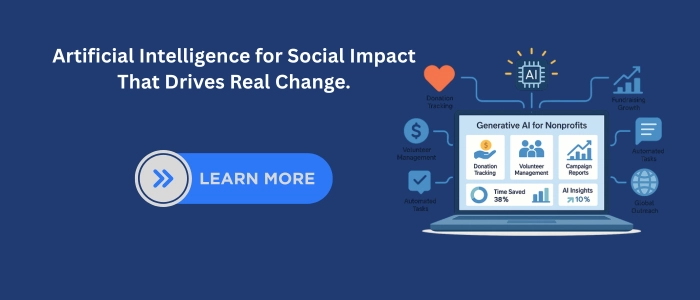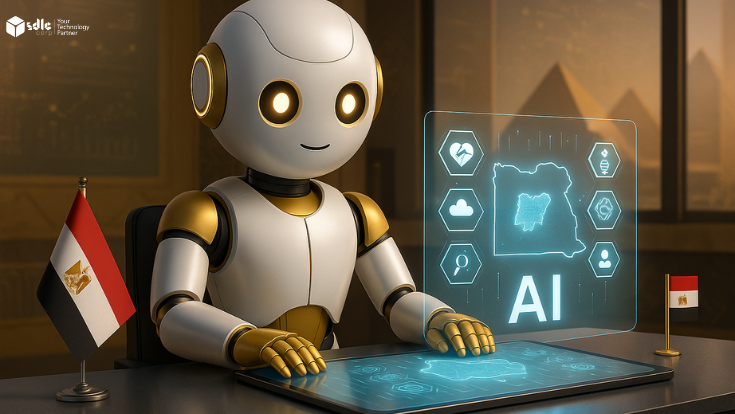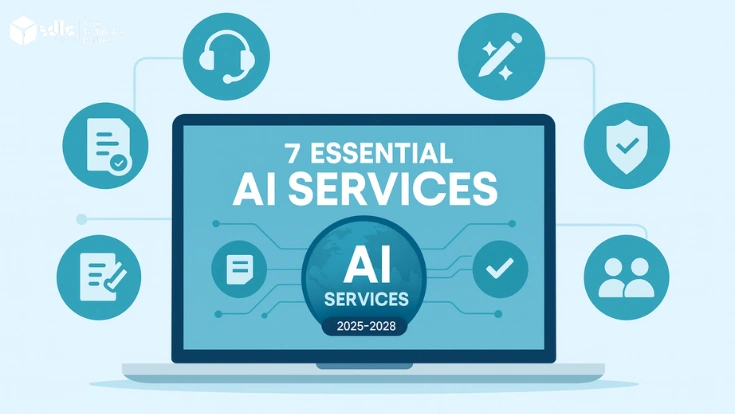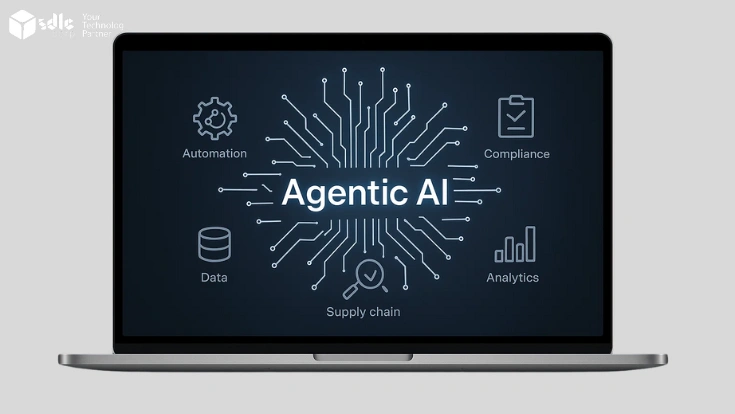Introduction
Generative AI for nonprofits is becoming a valuable tool that helps teams create donor letters, campaign content, and reports quickly and with precision. By reducing the time spent on repetitive tasks, staff can focus on community engagement, fundraising, and program growth. This shift allows organizations to make the most of limited resources while expanding their reach.
At the same time, AI in nonprofit organizations is transforming the way impact is measured and shared. With artificial intelligence for social impact, nonprofits can increase efficiency, enhance transparency, and adopt innovative approaches that drive stronger results for the communities they serve.
Use of Generative AI in Nonprofit Operations
Nonprofit organizations manage a wide range of activities, from program delivery to reporting and stakeholder communication. Generative AI can support these efforts by summarising documents, drafting outreach content, and assisting with internal knowledge management. Many organizations explore Generative AI development services to build systems that align with their goals while respecting budget and data constraints.
Understanding Generative AI in the Nonprofit Sector
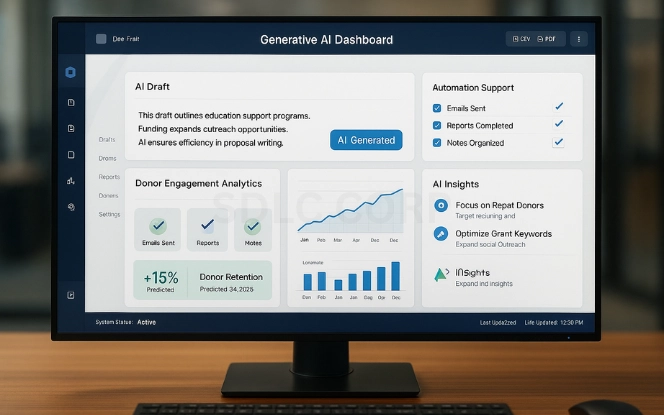
Generative AI refers to systems that learn from data and create new outputs, whether in text, images, audio, or predictive insights. For nonprofits, this capability means tasks like drafting proposals, summarizing research, or preparing campaign content can be automated while still reflecting the organization’s mission.
For example, instead of spending days writing a grant application, a nonprofit can use generative AI to create a draft in minutes. Staff can then refine the draft, ensuring accuracy and alignment with the cause. This shift does not replace human judgment, but it reduces time spent on repetitive tasks. As a result, teams gain more room to focus on strategy, partnerships, and direct service.
The broader concept of AI in nonprofit organizations goes beyond writing assistance. It includes analyzing donor behavior, predicting funding trends, and even supporting program delivery. Generative systems make these tasks more intuitive because they present outputs in natural language, making complex insights easier to understand.
Program Planning and Impact Reporting
Measuring impact and reporting outcomes are essential for nonprofit accountability. Generative AI can help analyse program data, draft evaluation summaries, and support grant documentation. In this context, a Generative AI consulting company may assist organizations in identifying appropriate use cases, setting boundaries, and ensuring responsible use of AI-generated outputs.
Benefits of Generative AI for Nonprofits
1. Efficiency in Administrative Tasks
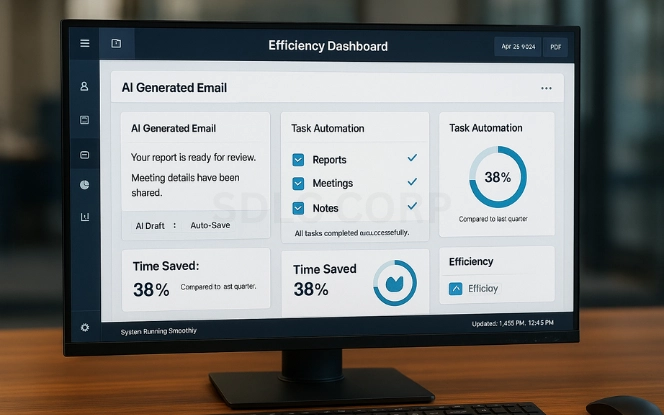
Most nonprofits operate with small teams. Manual work like drafting thank-you letters, creating newsletters, or preparing board reports consumes time that could be used for mission-driven activity. Generative AI reduces this load. It can draft communication templates, summarize performance metrics, and assist with donor updates. Staff still review and finalize, but the first draft is no longer a hurdle.
2. Better Donor Communication
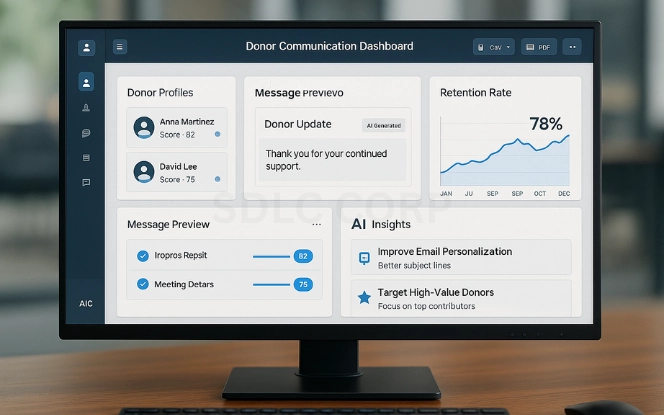
Donor relationships are central to nonprofit survival. Personalization strengthens these relationships, yet personalization at scale is difficult. By analyzing donor history and engagement patterns, AI can generate tailored messages. Here, AI-driven donor engagement strategies allow organizations to connect with supporters more effectively, sending messages that reflect individual interests and giving habits.
3. Cost Savings
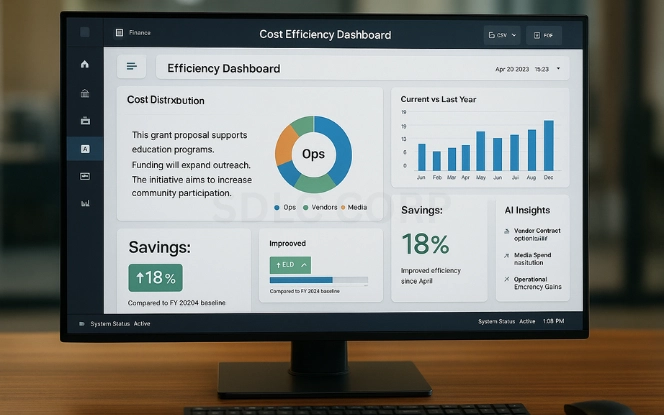
Technology investments often feel daunting for resource-limited nonprofits. Generative AI, however, can lower costs by reducing outsourcing needs. For instance, creating design assets or generating campaign copy typically requires external consultants. With the right AI tools, nonprofits can bring these functions in-house without large budgets.
4. Grant Writing and Fundraising Support
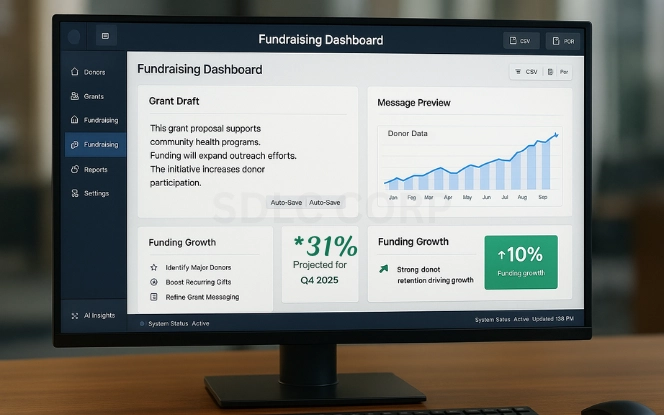
Securing funding is a constant challenge. Grant proposals demand clarity, data, and persuasive storytelling. Generative AI can draft structured applications and even help align them with funder requirements. This doesn’t replace human writers, but it provides a strong base. Organizations can also explore AI tools for nonprofit fundraising, which analyze donor trends and suggest likely contributors.
5. Greater Reach and Accessibility
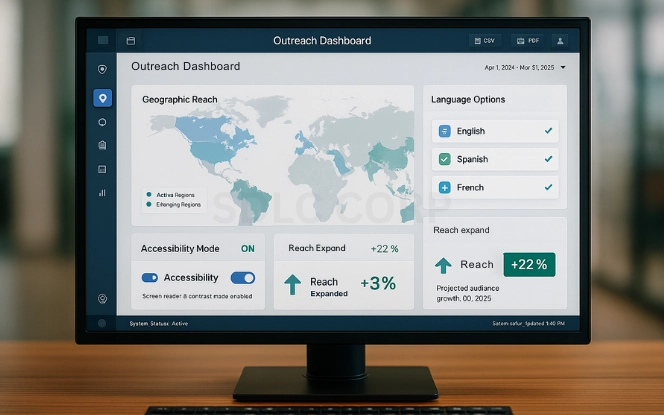
Many nonprofits rely on awareness campaigns to drive donations and support. Generative AI can translate content into multiple languages, summarize long reports, or convert text into accessible formats. This ensures broader reach and inclusion, particularly when audiences include people with diverse needs.
Practical Use Cases
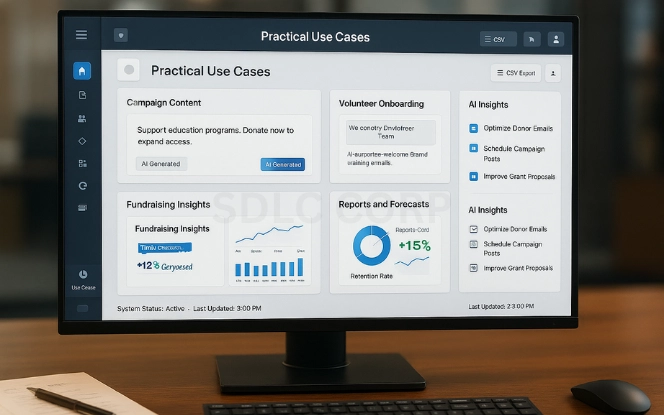
Content Creation for Campaigns
Campaign messaging must balance emotional appeal with factual accuracy. Generative AI creates draft stories, event descriptions, or educational posts quickly. Staff refine the drafts to match organizational voice, but they save hours compared to starting from scratch.
Volunteer Engagement
Volunteers often feel most valued when communication is frequent and clear. AI can assist by creating personalized onboarding emails, thank-you notes, and reminders. This reduces the risk of missed updates and keeps volunteers connected.
Program Evaluation and Reporting
Impact reporting is essential for building trust with donors and regulators. Generative AI can summarize survey results, create data visualizations, and prepare narratives. These tools ensure reports are consistent and professional while reducing manual effort.
Fundraising Optimization
Fundraising strategies depend on understanding donor behavior. AI systems can analyze giving histories and recommend next steps. For example, how nonprofits use generative AI in this context includes predicting which donors might upgrade their contributions or identifying when to launch targeted campaigns.
Community Education
Many nonprofits also serve as educators in their field. Whether producing brochures, blogs, or training manuals, AI speeds up the writing process. It also supports plain-language communication, making complex topics easier for audiences to grasp.
Challenges and Considerations
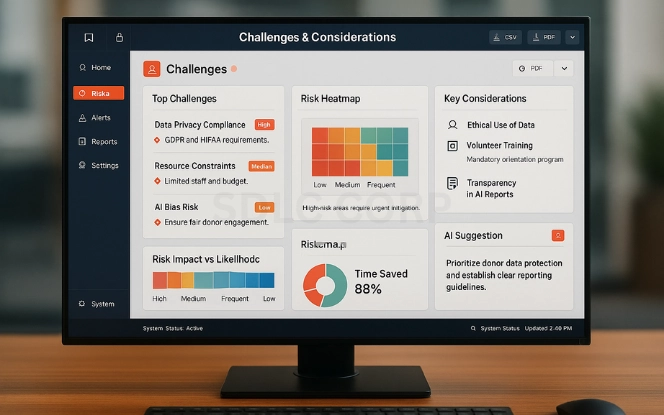
Data Privacy and Security
Nonprofits often handle sensitive data, such as donor contact details and beneficiary information. When using generative AI, protecting this data is crucial. Organizations must choose secure platforms and follow regulations like GDPR or HIPAA when applicable.
Bias and Fairness
AI models reflect the data they are trained on. If the training data carries bias, outputs may also be biased. For nonprofits, this risk could undermine trust. For example, an AI tool suggesting fundraising strategies might unintentionally favor wealthier demographics. Leaders must review outputs critically and adjust accordingly.
Maintaining Human Oversight
Generative AI should not replace human judgment. Staff must remain the final decision-makers, ensuring that AI outputs reflect the organization’s values and mission. Over-reliance can erode authenticity, especially in donor communications.
Cost of Implementation
While many AI tools are affordable, some advanced systems carry costs for integration and training. Nonprofits should evaluate tools carefully, starting small and scaling as benefits become clear.
Future Outlook
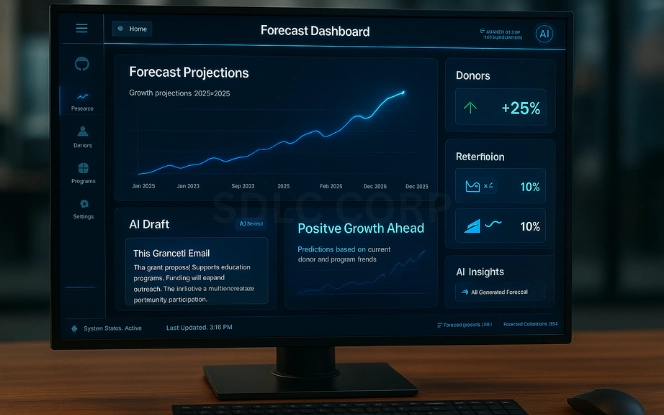
The role of artificial intelligence for social impact will expand in the coming years. Governments, donors, and communities increasingly expect nonprofits to demonstrate efficiency and transparency. AI supports both by streamlining processes and providing measurable outcomes.
Generative AI will not replace the empathy and passion that drive the nonprofit sector. Instead, it will enhance these qualities by freeing up time for mission-focused work. As more nonprofits adopt AI, best practices will evolve. Peer collaboration and shared learning will help organizations of all sizes use AI responsibly and effectively.
Integration with Existing Digital Systems
Generative AI tools often work alongside databases, CRM systems, and analytics platforms already used by nonprofits. Integrating these components requires careful planning to avoid disruption. Organizations may rely on AI development services to connect generative models with existing systems while maintaining data accuracy and operational continuity.
Development, Oversight, and Ongoing Support
Implementing generative AI responsibly requires ongoing testing, updates, and oversight. Nonprofits with specific technical needs may choose to hire generative ai developers to customise models, manage integrations, and ensure systems continue to reflect organizational values and compliance requirements.
Conclusion
Generative AI is no longer a future possibility for nonprofits; it is a practical tool that supports impact today. By applying AI tools for nonprofit fundraising, exploring AI-driven donor engagement strategies, and learning how nonprofits use generative AI to streamline operations, organizations can unlock new efficiencies without losing authenticity. The technology complements human effort rather than replacing it, helping staff devote more time to strategy, service, and community engagement. For leaders, the challenge lies in using these systems responsibly, with attention to privacy and fairness. The potential is clear: AI in nonprofit organizations strengthens communication, reporting, and trust. When used thoughtfully, generative AI for nonprofits amplifies the mission, driving lasting artificial intelligence for social impact. Contact us SDLC Corp.
To take the next step, Hire AI Development Services with SDLC Corp and explore how tailored solutions can transform your organization.
Read Related Blogs:
FAQs
What Is Generative AI For Nonprofits?
Generative AI for nonprofits refers to tools that create new content such as donor letters, grant drafts, and campaign materials. Instead of replacing staff, it reduces repetitive work and supports mission-driven activities.
How Do Nonprofits Use Generative AI In Daily Operations?
Nonprofits use generative AI to draft grant applications, prepare reports, personalize donor messages, and translate content for broader reach. This ensures efficiency while keeping human oversight at the core.
What Are The Benefits Of AI In Nonprofit Organizations?
AI in nonprofit organizations improves efficiency, reduces costs, and enhances donor communication. It also supports program evaluation and strengthens transparency by creating accurate reports quickly.
Can AI Tools For Nonprofit Fundraising Improve Donor Engagement?
Yes. AI tools for nonprofit fundraising analyze donor behavior, identify giving trends, and suggest next steps. Combined with AI-driven donor engagement strategies, nonprofits can build stronger supporter relationships.
Why Is Artificial Intelligence For Social Impact Important?
Artificial intelligence for social impact helps nonprofits achieve more with limited resources. It empowers organizations to expand reach, increase accountability, and deliver meaningful change in communities.

